Itinerary
At 55 degrees latitude south, Ushuaia (pronounced oo-swy-ah) is closer to the South Pole than to Argentina’s northern border with Bolivia. It is the capital and tourism base for Tierra del Fuego, the island at the southernmost tip of Argentina.Although its stark physical beauty is striking, Tierra del Fuego’s historical allure is based more on its mythical past than on rugged reality. The island was inhabited for 6,000 years by Yámana, Haush, Selk’nam, and Alakaluf Indians. But in 1902 Argentina, eager to populate Patagonia to bolster its territorial claims, moved to initiate an Ushuaian penal colony, establishing the permanent settlement of its most southern territories and, by implication, everything in between.When the prison closed in 1947, Ushuaia had a population of about 3,000, made up mainly of former inmates and prison staff. Today the Indians of Darwin’s “missing link” theory are long gone—wiped out by diseases brought by settlers and by indifference to their plight—and the 60,000 residents of Ushuaia are hitching their star to tourism.The city rightly (if perhaps too loudly) promotes itself as the southernmost city in the world (Puerto Williams, a few miles south on the Chilean side of the Beagle Channel, is a small town). You can make your way to the tourism office to get your clichéd, but oh-so-necessary, “Southernmost City in the World” passport stamp. Ushuaia feels like a frontier boomtown, at heart still a rugged, weather-beaten fishing village, but exhibiting the frayed edges of a city that quadrupled in size in the ’70s and ’80s and just keeps growing. Unpaved portions of Ruta 3, the last stretch of the Pan-American Highway, which connects Alaska to Tierra del Fuego, are finally being paved. The summer months (December through March) draw more than 120,000 visitors, and dozens of cruise ships. The city is trying to extend those visits with events like March’s Marathon at the End of the World and by increasing the gamut of winter activities buoyed by the excellent snow conditions.A terrific trail winds through the town up to the Martial Glacier, where a ski lift can help cut down a steep kilometer of your journey. The chaotic and contradictory urban landscape includes a handful of luxury hotels amid the concrete of public housing projects. Scores of “sled houses” (wooden shacks) sit precariously on upright piers, ready for speedy displacement to a different site. But there are also many small, picturesque homes with tiny, carefully tended gardens. Many of the newer homes are built in a Swiss-chalet style, reinforcing the idea that this is a town into which tourism has breathed new life. At the same time, the weather-worn pastel colors that dominate the town’s landscape remind you that Ushuaia was once just a tiny fishing village, snuggled at the end of the Earth.As you stand on the banks of the Canal Beagle (Beagle Channel) near Ushuaia, the spirit of the farthest corner of the world takes hold. What stands out is the light: at sundown the landscape is cast in a subdued, sensual tone; everything feels closer, softer, and more human in dimension despite the vastness of the setting. The snowcapped mountains reflect the setting sun back onto a stream rolling into the channel, as nearby peaks echo their image—on a windless day—in the still waters.Above the city rise the last mountains of the Andean Cordillera, and just south and west of Ushuaia they finally vanish into the often-stormy sea. Snow whitens the peaks well into summer. Nature is the principal attraction here, with trekking, fishing, horseback riding, wildlife spotting, and sailing among the most rewarding activities, especially in the Parque Nacional Tierra del Fuego (Tierra del Fuego National Park).
Remote and otherworldly, Antarctic is irresistible for its spectacular iceberg sculptures and calving glaciers, and for the possibility of up-close encounters with marine mammals and the iconic penguins. The Antarctic Peninsula – the main peninsula closest to South America – has a human history of almost 200 years, with explorers, sealers, whalers, and scientists who have come to work, and eventually intrepid visitors coming to enjoy this pristine and remote wilderness. It is a region of protected bays, unscaled snow-capped mountains, vast glaciers and a few places where whalers or scientists have worked. Just as irresistible are the many Gentoo and Chinstrap Penguin colonies, the seals basking on ice floes, the whales and orcas.
South Georgia is a breathtaking destination of towering snow-covered mountains, mighty glaciers, and low-lying grasslands that attract an astounding concentration of wildlife. It is possible to find Southern fur seals, Southern elephant seals and a variety of albatross species including Black-browed, Light-mantled Sooty, Grey-headed and the spectacular Wandering Albatross, plus thousands of King and Macaroni Penguins. South Georgia is also linked to the early Antarctic explorers. Captain James Cook first stepped ashore in 1775, but perhaps more famous is Ernest Shackleton’s arrival in 1916 following the sinking of his ship Endurance. Shackleton’s grave and the whaling museum at Grytviken are highlights, as would be a visit to one of the King Penguin colonies at Salisbury Plain or Gold Harbour.
South Georgia is a breathtaking destination of towering snow-covered mountains, mighty glaciers, and low-lying grasslands that attract an astounding concentration of wildlife. It is possible to find Southern fur seals, Southern elephant seals and a variety of albatross species including Black-browed, Light-mantled Sooty, Grey-headed and the spectacular Wandering Albatross, plus thousands of King and Macaroni Penguins. South Georgia is also linked to the early Antarctic explorers. Captain James Cook first stepped ashore in 1775, but perhaps more famous is Ernest Shackleton’s arrival in 1916 following the sinking of his ship Endurance. Shackleton’s grave and the whaling museum at Grytviken are highlights, as would be a visit to one of the King Penguin colonies at Salisbury Plain or Gold Harbour.
South Georgia is a breathtaking destination of towering snow-covered mountains, mighty glaciers, and low-lying grasslands that attract an astounding concentration of wildlife. It is possible to find Southern fur seals, Southern elephant seals and a variety of albatross species including Black-browed, Light-mantled Sooty, Grey-headed and the spectacular Wandering Albatross, plus thousands of King and Macaroni Penguins. South Georgia is also linked to the early Antarctic explorers. Captain James Cook first stepped ashore in 1775, but perhaps more famous is Ernest Shackleton’s arrival in 1916 following the sinking of his ship Endurance. Shackleton’s grave and the whaling museum at Grytviken are highlights, as would be a visit to one of the King Penguin colonies at Salisbury Plain or Gold Harbour.
Tiny Stanley, capital of the Falklands, seems in many ways like a British village fallen out of the sky. Many homes are painted in bright colours, adding visual appeal to this distant outpost. Not far offshore, the wreck of the Lady Elizabeth, is one of the many vessels remaining as a silent testimonial to the region’s frequent harsh weather conditions.The islands, also known by their Spanish name of Islas Malvinas, are home to arguably more tuxedo-clad inhabitants of the penguin variety than human residents. Various species, such as Gentoo, Magellanic and the more elusive King penguins, either live here permanently or use the Falklands as a stopover on their migration route. Darwin found the islands’ flora and fauna fascinating – no doubt you will, too.
Approaching from Ruta 3, it’s hard to believe that the horizon line of buildings perched just beyond the windswept dunes and badlands is the most successful of all coastal Patagonia settlements. But once you get past the outskirts of town and onto the wide coastal road known as the Rambla, the picture begins to change. Ranged along the clear and tranquil Golfo Nuevo are restaurants, cafés, dive shops, and hotels, all busy—but not yet overcrowded—with tourists from around the world.Puerto Madryn is more a base for visiting nearby wildlife-watching sites like Península Valdés and Punta Tombo than a destination in its own right. The town’s architecture is unremarkable, and beyond a walk along the coast there isn’t much to do. Indeed, even the few museums serve mainly to introduce you to the fauna you’ll see elsewhere. The exception is the beginning of whale season (May through July), when the huge animals cavort right in the bay before heading north—you can even walk out alongside them on the pier. During these months it’s worth the extra expense for a room with a sea view.The many tour agencies and rental-car companies here make excursion planning easy. Aim to spend most of your time here on one- or two-day trips exploring the surroundings. Note that competition is fierce between tourism operators in destinations such as Puerto Madryn and Puerto Pirámides on Península Valdés. Take information that tour operators and even the tourism office give you about these with a grain of salt: they often exaggerate Madryn’s virtues and other areas’ flaws.
Glamorous and gritty, Buenos Aires is two cities in one. What makes Argentina’s capital so fascinating is its dual heritage—part European, part Latin American. Plaza de Mayo resembles a grand square in Madrid, and the ornate Teatro Colón would not be out of place in Vienna. But you’ll know you’re in South America by the leather shoes for sale on cobbled streets and impromptu parades of triumphant soccer fans. Limited-production wines, juicy steaks, and ice cream in countless flavors are among the old-world imports the city has perfected.
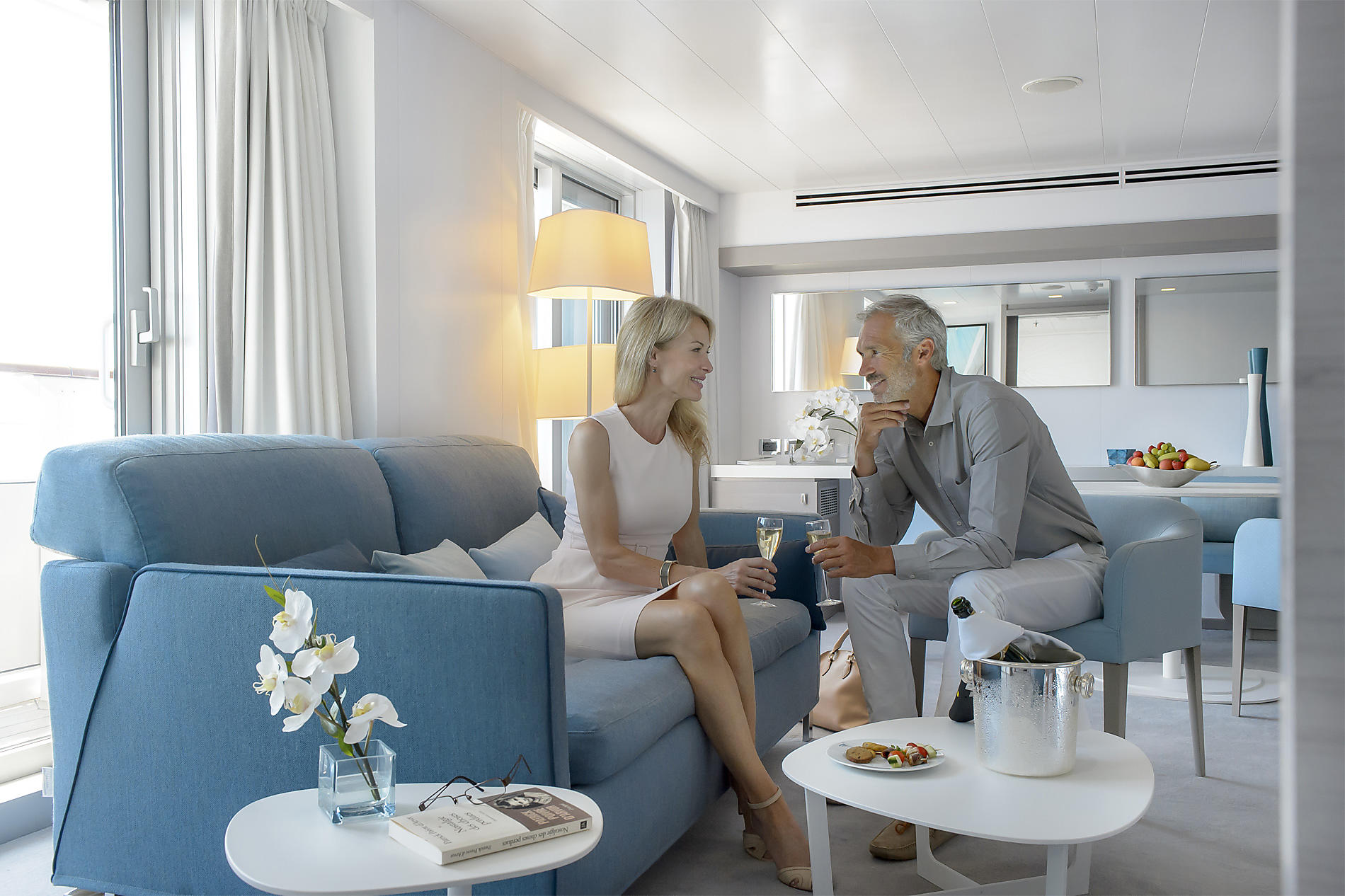
Services provided
- 24h room service
- Inclusive Internet access Wi-Fi (availability dependent on navigation and latitude)
- Individually-controlled air conditioning
- Dressing room with shelves and closet
- Dressing table and hairdryer
- Hermès top-of-the-line bath products
- Minibar included
- Nespresso coffee maker and boiler
- Electronic safe
- Direct line telephone
- Bose Bluetooth speaker
- Flat screen TV, international channels (availability dependent on navigation) and videos on demand
- 110V American (two flat pins)/220V European (round sockets with two round pins)
- Three ADA staterooms
In addition to the common services provided to all our suites and staterooms:
- Priority boarding
- Champagne and fruit basket upon arrival
- Butler service
- An assortment of sweet or savoury canapés and a basket of fruit every day
- A bedroom with king-size bed (180 x 190 cm) or two single beds (90 x 190 cm) and TV
- A living/dining room with sofa, TV, 4-seater table and sliding courtesy door
- A bathroom with shower and balneo bathtub
- A one-hour spa care for one person in the well-being space, chosen from the facial and body treatments on offer
- A private 12 m² balcony
- Three panoramic sliding bay windows
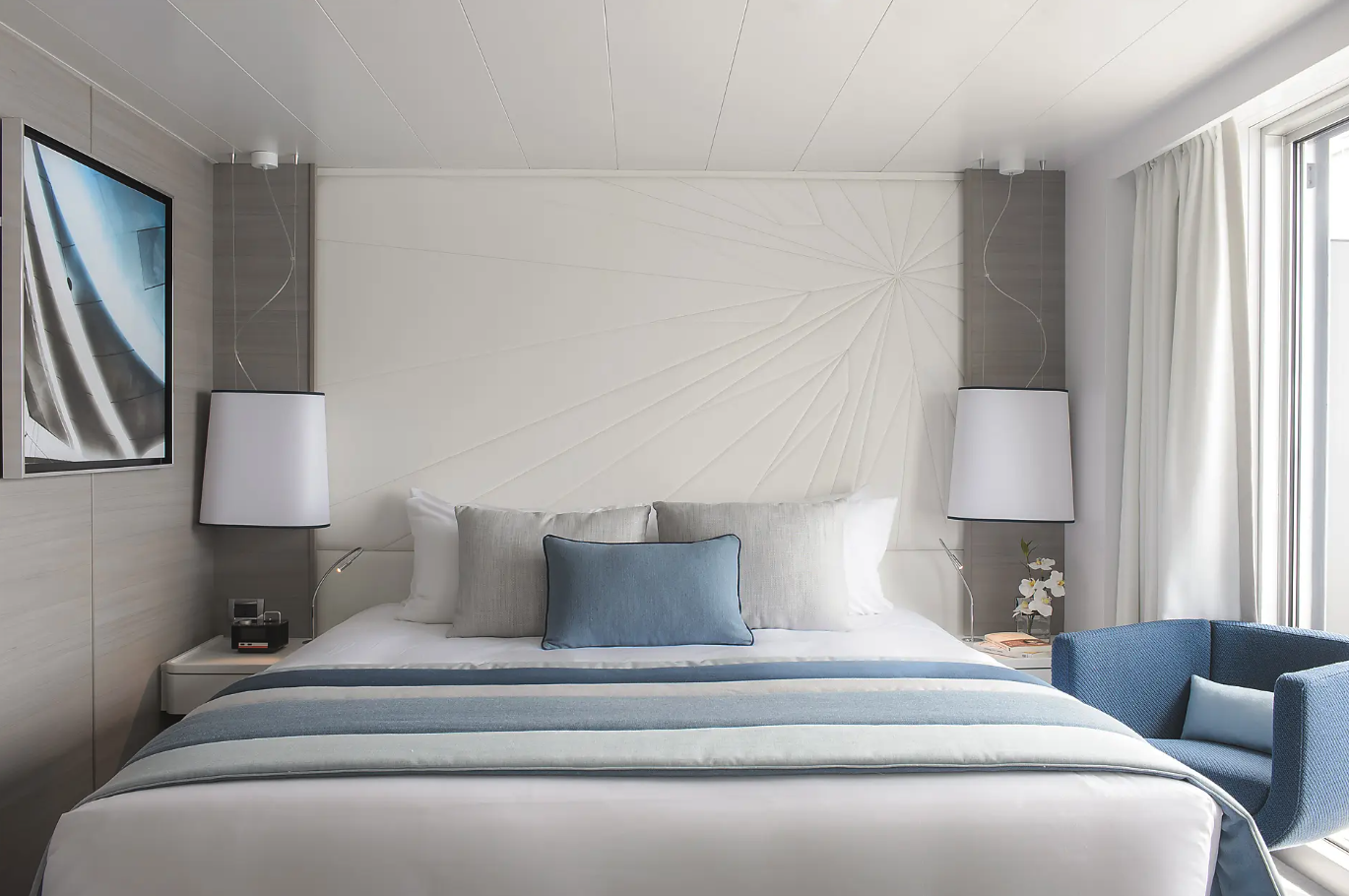
Services provided
- 24h room service
- Inclusive Internet access Wi-Fi (availability dependent on navigation and latitude)
- Individually-controlled air conditioning
- Dressing room with shelves and closet
- Dressing table and hairdryer
- Hermès top-of-the-line bath products
- Minibar included
- Nespresso coffee maker and boiler
- Electronic safe
- Direct line telephone
- Bose Bluetooth speaker
- Flat screen TV, international channels (availability dependent on navigation) and videos on demand
- 110V American (two flat pins)/220V European (round sockets with two round pins)
- Three ADA staterooms
In addition to the common services provided to all our suites and staterooms:
- Priority boarding
- Champagne and a basket of fruit on arrival
- Butler service
- An assortment of sweet or savoury canapés and a basket of fruit every day
- A bedroom with a king-size bed (180 x 190 cm) or two single beds (90 x 190 cm) and TV
- A second bedroom with a king-size bed (180 x 190 cm) or two single beds (90 x 190 cm) and TV
- A lounge with sofa, TV, two armchairs and two sliding courtesy doors
- A bathroom with shower and bath
- A private 12 m² balcony
- Three panoramic sliding bay windows

Services provided
- 24h room service
- Inclusive Internet access Wi-Fi (availability dependent on navigation and latitude)
- Individually-controlled air conditioning
- Dressing room with shelves and closet
- Dressing table and hairdryer
- Hermès top-of-the-line bath products
- Minibar included
- Nespresso coffee maker and boiler
- Electronic safe
- Direct line telephone
- Bose Bluetooth speaker
- Flat screen TV, international channels (availability dependent on navigation) and videos on demand
- 110V American (two flat pins)/220V European (round sockets with two round pins)
- Three ADA staterooms
In addition to the common services provided to all our suites and staterooms:
- Priority boarding
- Champagne and a basket of fruit on arrival
- Butler service
- An assortment of sweet or savoury canapés and a basket of fruit every day
- A bedroom with a king-size bed (180 x 190 cm) or two single beds (90 x 190 cm) and TV
- A lounge with sofa, TV and a sliding courtesy door
- A bathroom with shower and a balneo bathtub
- A private 12 m² balcony
- Two panoramic sliding bay windows

Services provided
- 24h room service
- Inclusive Internet access Wi-Fi (availability dependent on navigation and latitude)
- Individually-controlled air conditioning
- Dressing room with shelves and closet
- Dressing table and hairdryer
- Hermès top-of-the-line bath products
- Minibar included
- Nespresso coffee maker and boiler
- Electronic safe
- Direct line telephone
- Bose Bluetooth speaker
- Flat screen TV, international channels (availability dependent on navigation) and videos on demand
- 110V American (two flat pins)/220V European (round sockets with two round pins)
- Three ADA staterooms
In addition to the common services provided to all our suites and staterooms:
- Priority boarding
- Champagne and fruit basket upon arrival
- Butler service
- An assortment of sweet or savoury canapés and a basket of fruit every day
- A bedroom with a king-size bed (180 x 190 cm) or two single beds (90 x 190 cm) and TV
- A living/dining room with sofa, TV, 4-seater table and sliding courtesy door
- A bathroom with shower and bath
- A private 12 m² balcony
- Three panoramic sliding bay windows

Services provided
- 24h room service
- Inclusive Internet access Wi-Fi (availability dependent on navigation and latitude)
- Individually-controlled air conditioning
- Dressing room with shelves and closet
- Dressing table and hairdryer
- Hermès top-of-the-line bath products
- Minibar included
- Nespresso coffee maker and boiler
- Electronic safe
- Direct line telephone
- Bose Bluetooth speaker
- Flat screen TV, international channels (availability dependent on navigation) and videos on demand
- 110V American (two flat pins)/220V European (round sockets with two round pins)
- Three ADA staterooms
In addition to the common services provided to all our suites and staterooms:
- Champagne and fruit basket upon arrival
- An assortment of sweet or savoury canapés and a basket of fruit every day
- A bedroom with king-size bed (180 x 190 cm) and TV
- A lounge with two armchairs, a TV, a sliding courtesy door and a sofa convertible to a king-size bed (180 x 190 cm)
- Two bathrooms with shower
- A private 8 m² balcony
- Two panoramic sliding bay windows

Services provided
- 24h room service
- Inclusive Internet access Wi-Fi (availability dependent on navigation and latitude)
- Individually-controlled air conditioning
- Dressing room with shelves and closet
- Dressing table and hairdryer
- Hermès top-of-the-line bath products
- Minibar included
- Nespresso coffee maker and boiler
- Electronic safe
- Direct line telephone
- Bose Bluetooth speaker
- Flat screen TV, international channels (availability dependent on navigation) and videos on demand
- 110V American (two flat pins)/220V European (round sockets with two round pins)
- Three ADA staterooms
In addition to the common services provided to all our suites and staterooms:
- Priority boarding
- Champagne and a basket of fruit on arrival
- Service of a steward
- An assortment of sweet or savoury canapés and a basket of fruit every day
- One king-size bed (180 x 190 cm) or two single beds (90 x 190 cm) and TV
- A lounge area with a sofa (167 x 70 cm) and an armchair
- A bathroom with shower
- A private 5 m² balcony
- A panoramic sliding bay window

Services provided
- 24h room service
- Inclusive Internet access Wi-Fi (availability dependent on navigation and latitude)
- Individually-controlled air conditioning
- Dressing room with shelves and closet
- Dressing table and hairdryer
- Hermès top-of-the-line bath products
- Minibar included
- Nespresso coffee maker and boiler
- Electronic safe
- Direct line telephone
- Bose Bluetooth speaker
- Flat screen TV, international channels (availability dependent on navigation) and videos on demand
- 110V American (two flat pins)/220V European (round sockets with two round pins)
- Three ADA staterooms
In addition to the common services provided to all our suites and staterooms:
- One king-size bed (180 x 190 cm) or two single beds (90 x 190 cm) and TV
- A bathroom with shower
- A private 4 m² balcony
- A panoramic sliding bay window
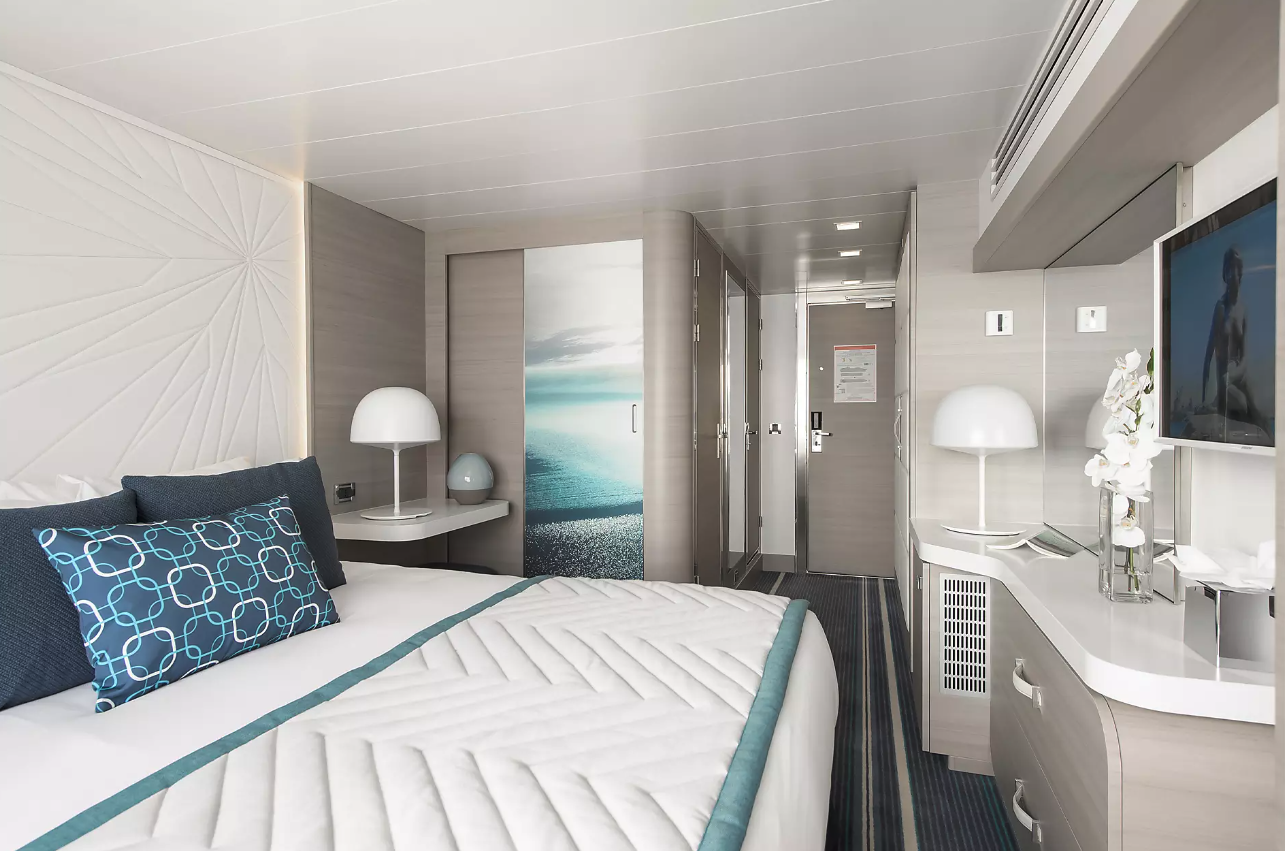
Services provided
- 24h room service
- Inclusive Internet access Wi-Fi (availability dependent on navigation and latitude)
- Individually-controlled air conditioning
- Dressing room with shelves and closet
- Dressing table and hairdryer
- Hermès top-of-the-line bath products
- Minibar included
- Nespresso coffee maker and boiler
- Electronic safe
- Direct line telephone
- Bose Bluetooth speaker
- Flat screen TV, international channels (availability dependent on navigation) and videos on demand
- 110V American (two flat pins)/220V European (round sockets with two round pins)
- Three ADA staterooms
In addition to the common services provided to all our suites and staterooms:
- A king-size bed (180 x 190 cm) and TV
- A bathroom with shower
- A window or round porthole
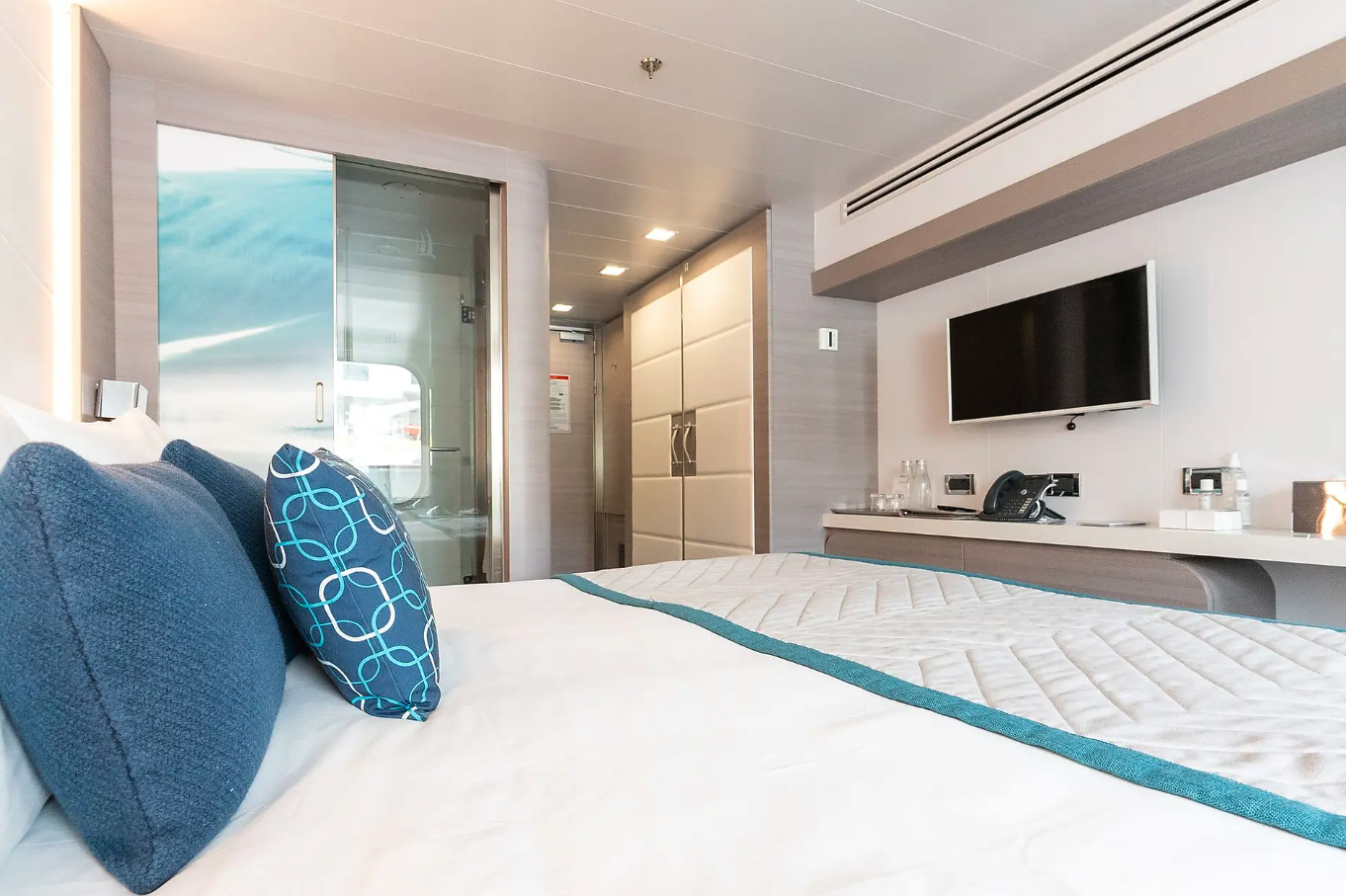
Services provided
- 24h room service
- Inclusive Internet access Wi-Fi (availability dependent on navigation and latitude)
- Individually-controlled air conditioning
- Dressing room with shelves and closet
- Dressing table and hairdryer
- Hermès top-of-the-line bath products
- Minibar included
- Nespresso coffee maker and boiler
- Electronic safe
- Direct line telephone
- Bose Bluetooth speaker
- Flat screen TV, international channels (availability dependent on navigation) and videos on demand
- 110V American (two flat pins)/220V European (round sockets with two round pins)
- Three ADA staterooms
In addition to the common services provided to all our suites and staterooms:
- One king-size bed (180 x 190 cm) or two single beds (90 x 190 cm) and TV
- A bathroom with shower
- A private 4 m² balcony
- A window and a panoramic glazed swing door

A la carte meals are served at the table in the gastro restaurant. At lunch, a selection of dishes inspired by contemporary French brasseries will be offered. At dinner, it is time to sample the grand traditions of French fine dining, with menus to go with one of the best wines from our cellar, as recommended by our sommelier.
To the rear of deck 2 you’ll find a gastronomic restaurant big enough to seat all passengers together at one sitting.
- Deck 2
- 3,980 square feet
- Capacity: 268
- Breakfasts, lunches and dinners, French and international cuisine, elegance and refinement
- Wine cellar
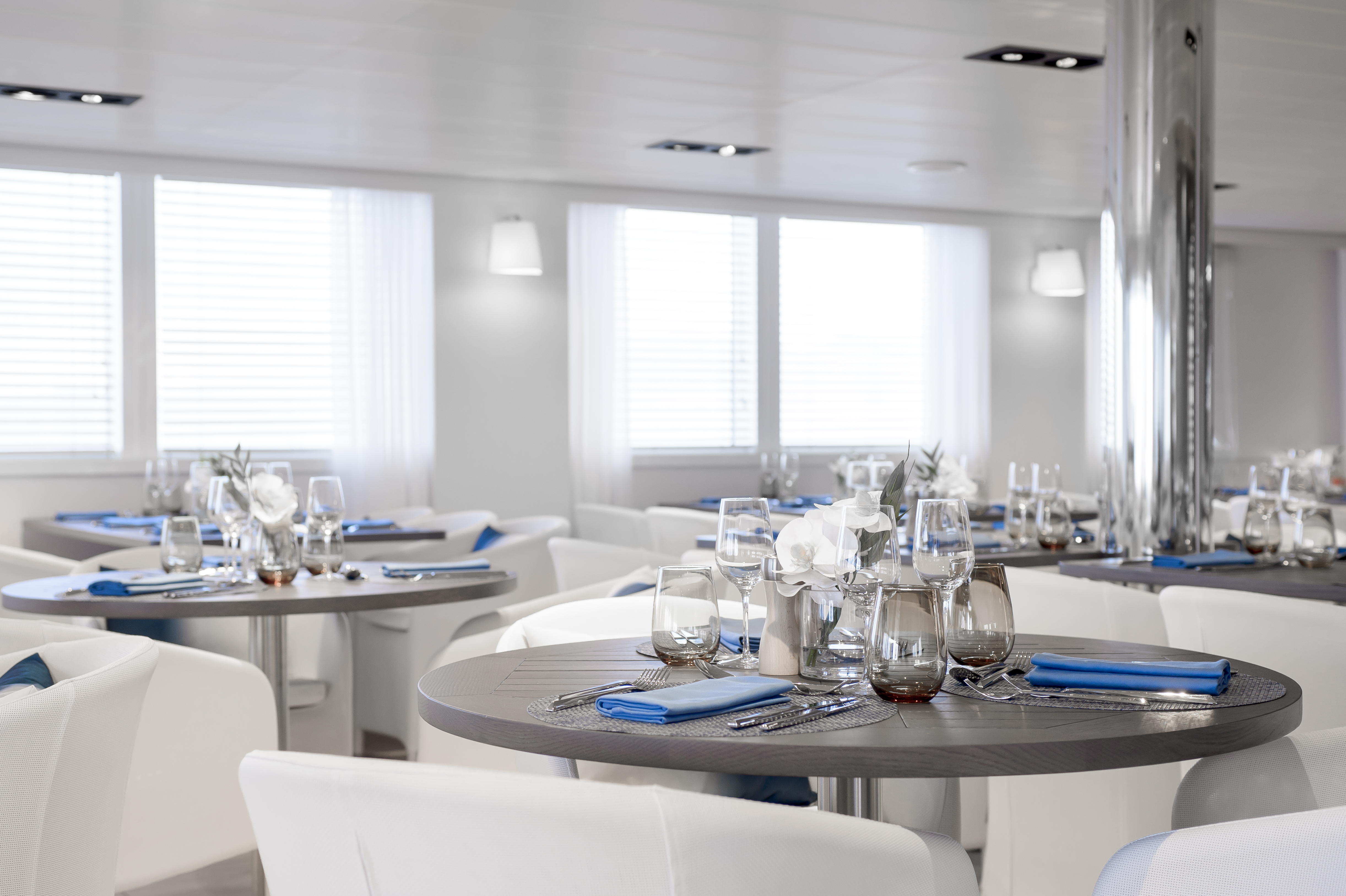
- Deck 6
- Enjoy breakfasts, buffet lunches and themed dinners in a relaxed atmosphere at the grill restaurant on Deck 6.
- 2,530 square feet
- Interior capacity: 150
- Exterior capacity: 60

Whether you wish to have breakfast in the privacy of your stateroom, savour a snack in the middle of the day or enjoy your dinner in an intimate setting, our Room Service is available for you. Have a gourmet interlude and treat yourself from a varied menu at any time of day or night*.
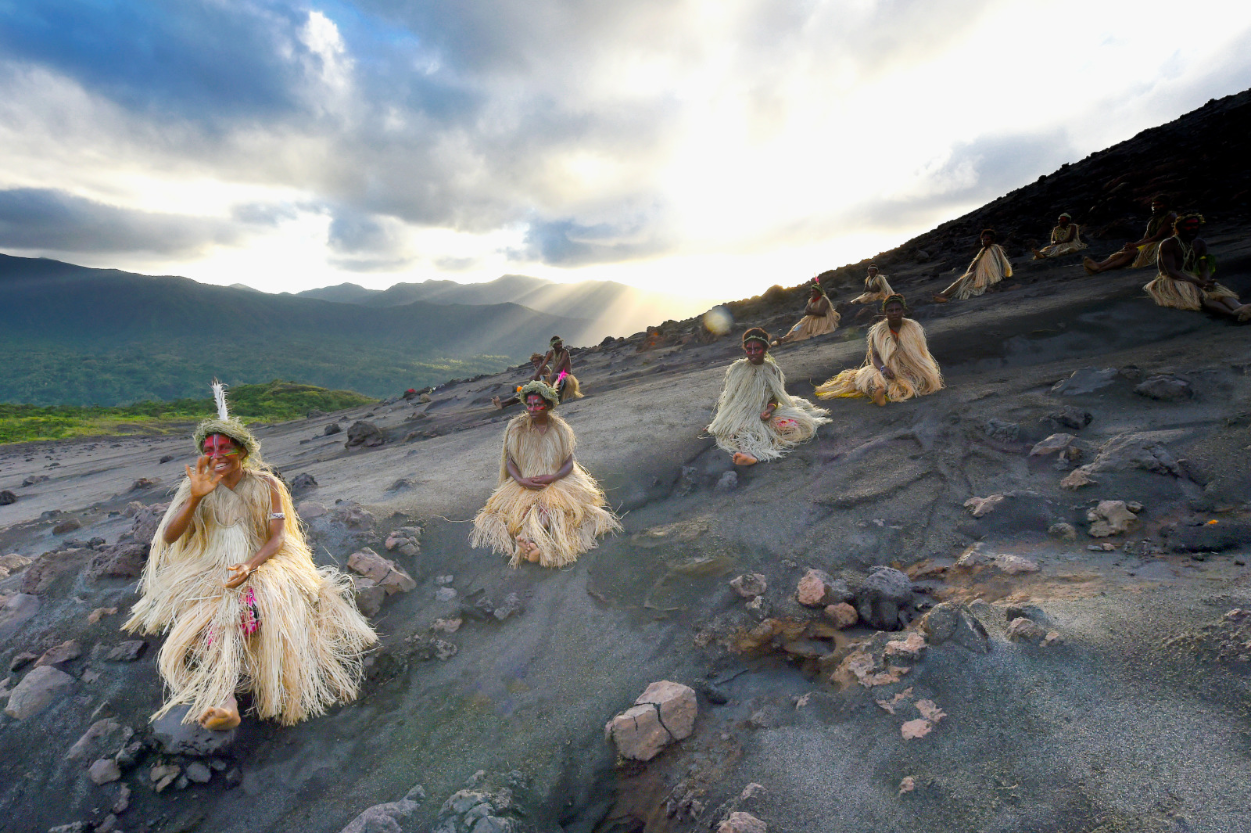
Excursions & land itineraries
Each itinerary has been thoughtfully created by our teams to offer you a complete excursion experience. You can discover the hidden gems of the regions you visit in line with your interests.
Hidden creeks, ancient cities, UNESCO world heritage sites… the world reveals its hidden gems as you journey along the routes taken by travellers. In keeping with our ethos “Accessing the worlds treasures by sea”, we offer a wide choice of land excursions during all our cruises (except for expeditions). Chosen by our PONANT experts for their cultural value and historic interest, these excursions can last a few hours or a few days. If you need to stay on land overnight, we take care of your stay from start to finish, until you rejoin your ship. These longer excursions mean you can discover the unmissable sites of the region you are visiting, like Cuzco in Peru for example or the Mekong Delta in Vietnam.
You can access these trips by pre-booking two months before your departure date.

- Deck 3
- 2,740 square feet
- Interior capacity: 110
- Exterior capacity: 30
- Tea rooms, bar, programme of live musical entertainment, dance floor
- Access to the exterior terrace
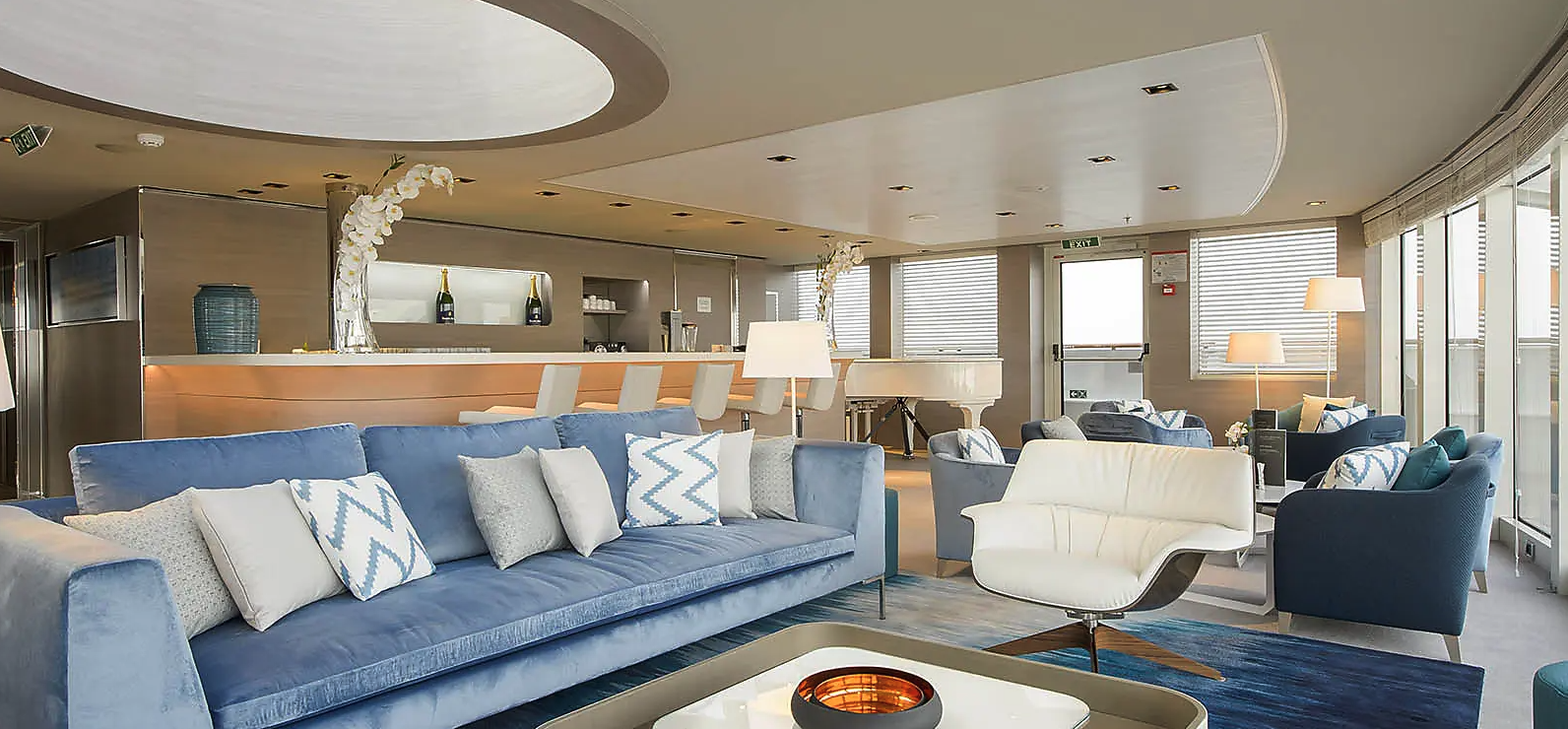
- Deck 6
- 1,185 square feet
- Library, internet space, bar, live entertainment on certain evenings
- Direct access to the panoramic terrace
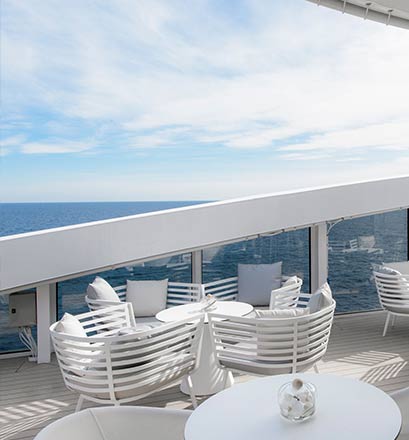
- Deck 6
- Lounge area with seating for 50
- Overlooking the pool deck
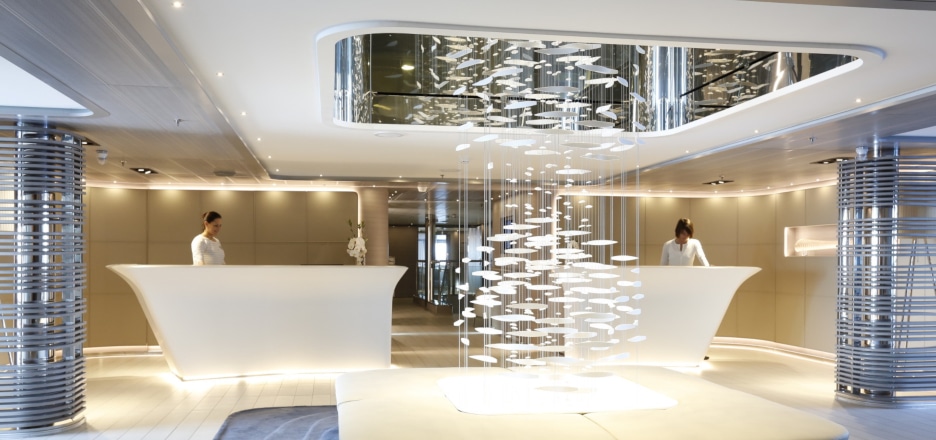
On board the sisterships (Le Boreal, L’Austral, Le Soléal and Le Lyrial) and PONANT EXPLORERS, the reception desk and the excursion desk are arranged side by side to facilitate all your requests.
Reception: our receptionists can accommodate you 24 hours a day on all our ships (from 7 a.m. to 11 p.m. on Le Ponant) to answer all your needs, such as room service, etc.
The excursion office: the excursion team is available at all times to tell you about the onshore programmes, organise group or private excursions and to manage transfers at the start or end of the cruise.
On Le Ponant, the receptionist will answer all your questions about excursions.
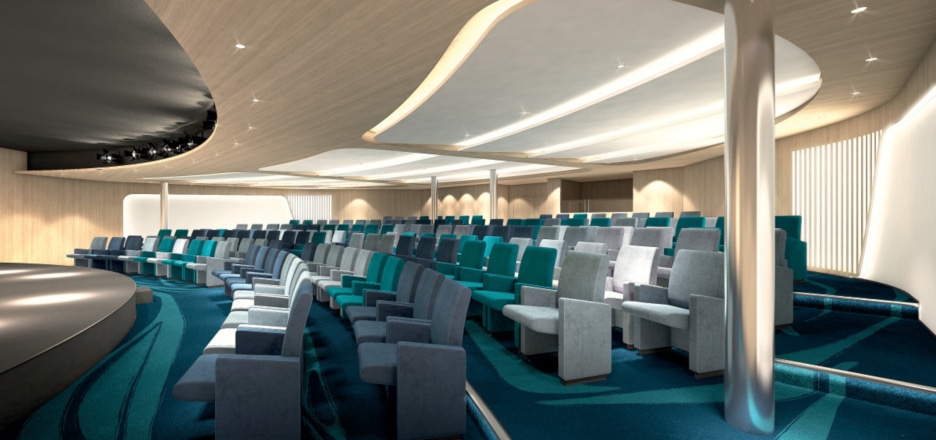
The Theatre
The Theatre* is the most unique meeting space on board. It’s the largest space on the ship and regularly accommodates all the passengers. It plays host to shows and entertainment as well as conferences from our experts, naturalist guides and guests of honours. The Theatre makes every cruise unique and enriching thanks to its constant and very accessible events.
- Deck 4
- 2,690 square feet
- Capacity: 250
- Conference room, concert hall/multi-purpose auditorium
- Audiovisual equipment
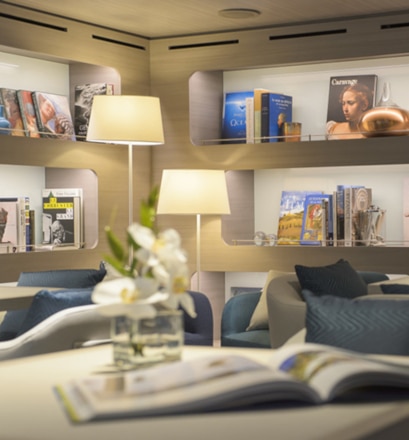
- Deck 5
- Studio Ponant: Special area for viewing and ordering photos/videos
- Kids Club (games area + Wii and PS4)
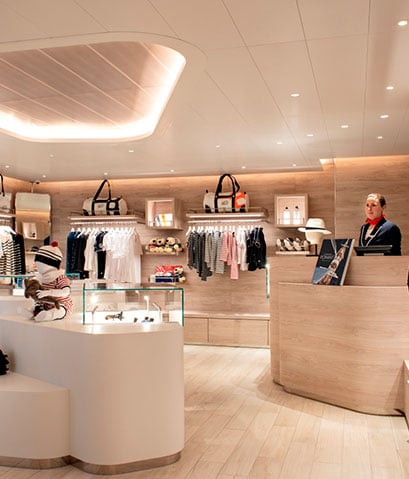
On board all our ships, a shop is open during sailing. It offers a selection of presents and souvenirs: clothing, jewellery, beauty products, postcards and accessories.
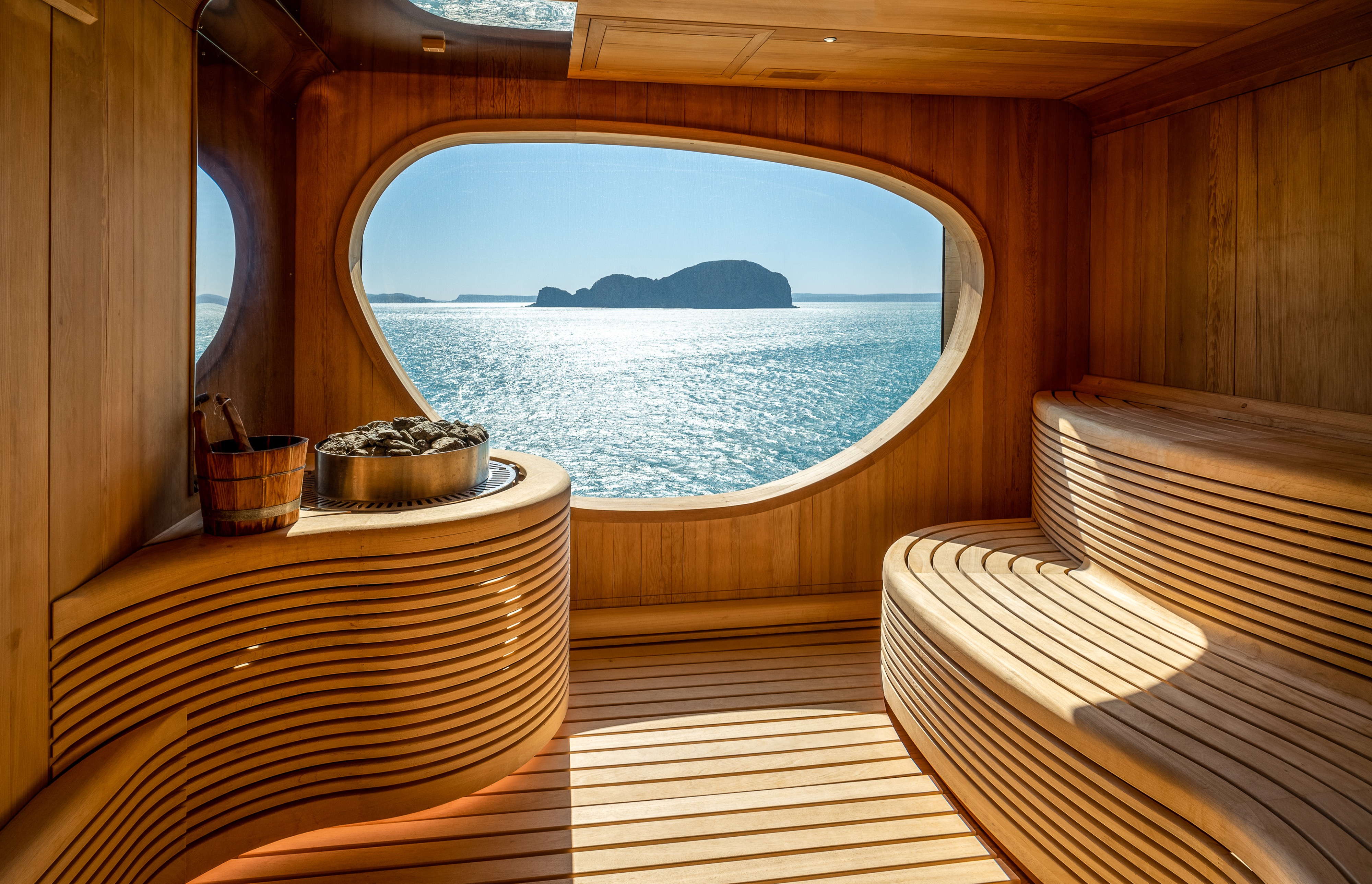
All our ships feature an onboard spa. Equipped with massage cabins and a Turkish bath (Sister ships) or a sauna (Explorers), the spa offers a wide choice of top-of-the-range treatments provided in association with SOTHYS™ or CLARINS (Le Bellot and Le Jacques-Cartier only), leading French spa and wellness centre brands.
Discover a range of facial treatments, aromatic baths, exfoliation and body massage treatments designed to provide moments of complete relaxation. You can also supplement your beauty ritual with additional services such as hair-removal, makeovers, manicures and pedicures.
Prices and details of services in the PONANT Yacht Spa menu.

The gyms on our ships are equipped with the very latest Technogym© equipment and machines. Treadmills, exercise bikes, Kinesis Wall© strength training machines and many other types of equipment are all provided in a laid-back relaxing environment. The wide floor-to-ceiling windows looking out over the sea add undeniable charm to the exercise sessions.
Each day also begins with organised morning workout sessions, either out in the open air or in the theatre. These are supplemented by water aerobics in the pool, or in the sea off the beach for PONANT passengers, when the situation allows it.

Provided in partnership with KÉRASTASE® and L’ORÉAL PROFESSIONNEL®, the hairdressing salon offers a complete range of top quality treatments designed to strengthen, nourish and reinvigorate hair’s shine and brilliance. Our stylists are available to serve all your styling, highlighting, colouring, cutting and tailored hair advice needs.
Your stateroom Officer will be able to take care of your laundry**. The washing and ironing of your clothes will take between 24 and 48 hours. Only ironing** can be delivered on the same day. As dry-cleaning is not possible on the ship, please only give us clothes that can be washed in water.
** These services are not free of charge and are billed directly to your stateroom account.
PONANT ships are non-smoking, even on the stateroom balconies. Smoking is only allowed in the exterior parts of the ship designated for the purpose.
A number of electrical outlets are provided for our cruise guests to use in our common areas.
European power sockets
the 220 volt 50 hertz alternating current is distributed by sockets meeting European standards. Onboard power is 200 volt AC (European standard) and 110 volt AC (North American standard). For safety reasons, hair irons and clothes irons cannot be used in staterooms. Please note that on Le Ponant, 110 volt AC is only available in stateroom bathrooms.
Children under one year of age shall not be authorised to embark on the ships.
On classic cruises, children are accepted from the age of one, with a maximum of 5 children between 1 and 6 years old on board.
On “expedition” cruises children are accepted from 6 years old (except cruises aboard Le Commandant Charcot) and must be fully independent during all the outside activities organised and during disembarkation in rubber boats, be sufficiently tall to sit on the inflatable sides of the boats, and old enough to understand, and immediately respond to the orders given by the persons in charge. As a result, children’s participation in any activity in an inflatable boat shall be subject to the agreement of the Captain and of the Expedition Head, depending on the sea conditions, and the difficulty of disembarking at each location visited. The ships do not carry Parka’s in children’s sizes. Parents must arrange to bring a suitable Parka for children. In all cases, children and young people under the age of 18 are at all times on board or on land under the full and total responsibility of their parents or carers.
For all “expedition” cruises on board Le Commandant Charcot, children are accepted from 8 years old only.
Children aged 4 years or more can be welcomed in the Kid’s Club when the service is offered on board (consult the list of cruises concerned).
The crew are bilingual in French and English. All signage and announcements made are in French and English. On certain cruises, crew members also speak other languages.
On board our vessels you can enjoy the following services:
- Reception desk 24/7 on our Sisterships, Le Paul Gauguin and PONANT Explorers, and 7:00AM to 11:00PM on Le Ponant,
- Customer Service Office,
- Excursions Office,
- Breakfast in your stateroom,
- Butler service on Sisterships: for passengers staying in one of the suites on deck 6.
- Stateroom service (Free & available 24/7),
- Wake-up service by the reception,
- Laundry,
- Boutique,
- Fitness room,
- Wellness area,
- Group sessions of gym,
- Outdoor pool (except for Le Ponant),
- Photography/video service (except for Le Ponant),
- Bars,
- Postal service,
- Restaurant,
- Only onboard Le Commandant Charcot :
- Alain Ducasse restaurant (Deck 5)
- Brasero and Blue Lagoon
- Indoor pool
- Snowroom
- Cigare Lounge
- Private fitness sessions (depending on the availability of the coach, non included, priority for the passengers of the Owner Suite, Duplex Suites, Prestige and Grand Prestige Suites).
Free Wi-Fi internet access is available on all of our ships, in both the staterooms and the communal areas. One or several computers are at your disposal in the recreation centres. Please note that the Wi-Fi connection may be discontinued depending on the navigation area and landscapes that may block the vessel from satellite coverage, especially at high latitudes (no connection possible beyond 80° North or South), or for technical reasons beyond our control.
All the ships have a doctor and a nurse available on board, except Le Ponant, on which there is a nurse and a telemedicine service available:
- The schedules of consultation are listed each day in the log book (emergency consultation 24/7).
- The Sisterships, PONANT Explorers, Le Paul Gauguin and Le Commandant Charcot also have a hospital for any small surgery.
- During excursions, cruise guests are accompanied by a doctor or a nurse to provide first aid when away from the ship.
Medical Consultations
Consultations, medical or surgical treatments, and laboratory-based or medical imagery-based (radiology) analyses carried out on board by the doctor or the nurse have to be paid for. The price can vary according to the time and place of the consultation (hospital or stateroom). The prices for all treatments and procedures are displayed in the waiting room. Any medication must also be paid for by the passenger. If using medications on a regular basis make sure to bring adequate supplies for the duration of your cruise.
The doctor on board is not authorised to distribute sick leaves and prescriptions. Only accounts and invoices are provided which may be used by the passenger to obtain a refund from his/her health insurance if his/her contract allows.
Special Medical Treatment
If you have any special treatment, we ask you to inform the reservation service when you register for the cruise, to note it on the information sheet before departure, then inform the on-board crew at the moment of departure and always keep your medication with you for the duration of the cruise.
Seasickness
Our ships (except Le Ponant) have stabilisers equipped with dynamic fins which adapt to the movements of the ship. This system allows the ship to anticipate and compensate for the pitching and tossing of the sea to achieve greater stability. Passengers suffering from seasickness will see their symptoms alleviated and are pleasantly surprised to not feel uncomfortable during their journey. However it is wise to bring travel motion medication with you for peace of mind.
Our Sisterships, PONANT EXPLORERS, Le Paul Gauguin and Le Commandant Charcot were designed for people with reduced mobility in mind:
- Posters, signage and stateroom numbers are translated into Braille.
- Specially designed staterooms;
Access ramps allowing easy movement in communal areas:
– Decks 3 (307), 4 (407) and 5 (509) on board the Sisterships: three 18 m² double cabins adapted for wheelchair access and fitted with either a double bed (180 x 200 cm) or two single beds (90 x 200 cm), a bathroom with shower and toilet, and in the case of the cabins on decks 4 and 5 only, a 4 m² balcony fitted with a small exterior wheelchair access ramp.
– Decks 4 (431) and 5 (527) on board the PONANT Explorers: two 27.5 m² double cabins adapted for wheelchair access and fitted with either a double bed (180 x 200 cm) or two single beds (90 x 200 cm), a bathroom with shower and toilet, and a 4 m² balcony with a small exterior wheelchair access ramp.
– Decks 6 (626 and 628) and 8 (818) on board Le Commandant Charcot: three 28 m² double cabins adapted for wheelchair access and equipped with either a double bed (180 x 200 cm) or two single beds (90 x 200 cm), a bathroom with shower and toilet, and a 7.5 m² balcony with a small exterior wheelchair access ramp.
– Deck 4 (415 and 416) on board Le Paul Gauguin: two 21 m² double cabins adapted for wheelchair access, with cabin 416 fitted with a queen size bed (160 x 200 cm) and cabin 415 fitted with two single beds (90 x 200 cm), and with both cabins featuring a panoramic window and a bathroom with shower and toilet.
Despite these arrangements, each passenger should be able to be independent or travel with a close family member or friend who can give them whatever assistance they require during their trip.
If a person has not been judged suitably fit for travel in complete safety, the company reserves the right to refuse their embarkation. Disembarkation in difficult places or in a Zodiac® is subject to the approval of the Captain, who will always have the safety and wellbeing of the passenger in mind.
We advise our passengers to wear casual and elegant outfits at their convenience, and more formal attire for the Captain’s Dinner.

- Pool
- Grill Restaurant
- Internet Café
- Library
- Panoramic Lounge
- Panoramic Terrace
- Grand Deluxe Suite
- Deluxe Suite
- Owner’s Suite
- Staterooms

- Fitness Room
- Spa
- Hammam
- Hair Salon
- Image & Photo Desk
- Bridge
- Staterooms

- Theatre
- Staterooms

- Main Lounge
- Shop
- Excursion Desk
- Reception Desk
- Medical Centre
- Staterooms

- Marina
- Gastronomic Restaurant

